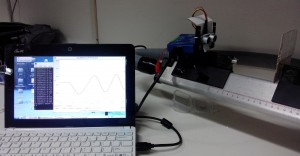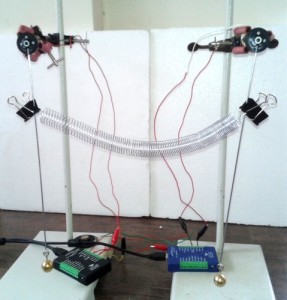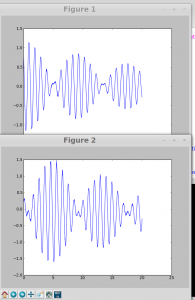Today in the morning, I reached IUAC (Inter University Accelerator Cenre ) New Delhi. Started working on the experiment program codes with Ajith sir. We got the air-track set-up for doing the mechanics experiments. Repeated some of the motion related experiments to study the changes required.
We modified the program for using srf module to plot position time graph. Now we can fetch the position-time data and store it in a file and then plot the p-t, v-t and a-t graphs.
We wrote another program to plot this graph in real -time. This program enables students to see the graph in real time as the glider moves on the air track. Here is the experimenta set up…
We also set-up a pendulum experiment using a thick metal block and suspended it using long strings to have a pendulum of large time period.
The program is written to plot the position of pendulum using motion sensor. Committed the same to Git repository. The plot shows the smooth sine curve of oscillations.
Tried the experiment with motion sensor using toy cars. this can be an amazing demonstration experiment for highschool students.
Tomorrow we will work on sound experiments and finish the required programs.








